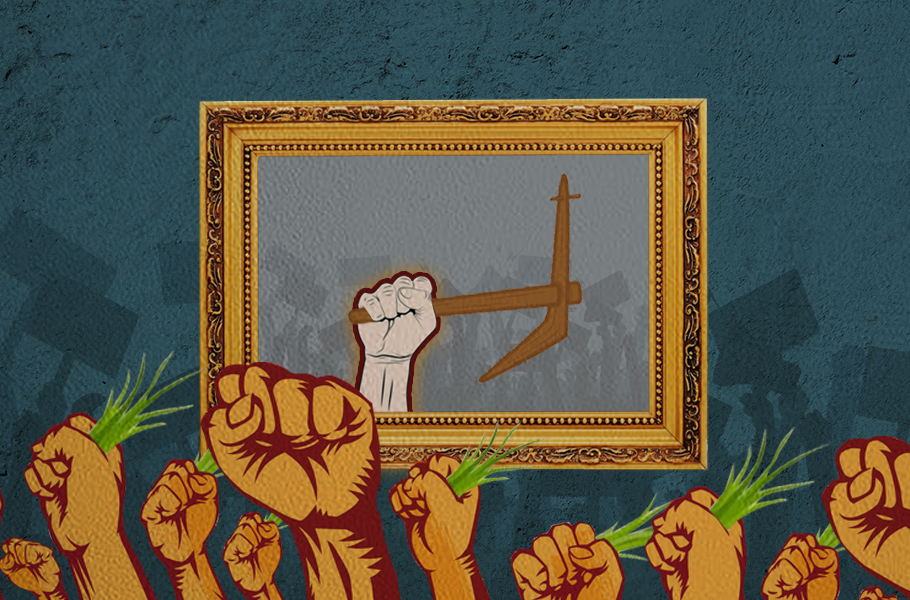
Organised, non-violent protests can also be effective, show farmers
Fifty five years since former prime minister Lal Bahadur Shashtri's iconic 'Jai Jawaan Jai Kisaan' slogan, the condition of the farmers in India remains grim, marred with suicides and other agriculture-related issues that leads to protests, long marches, and more.

Fifty five years since former prime minister Lal Bahadur Shashtri’s iconic ‘Jai Jawaan Jai Kisaan’ slogan, the condition of the farmers in India remains grim, marred with suicides and other agriculture-related issues that lead to protests, long marches, and more.
India is an agrarian economy where nearly 60% of the population is involved in agriculture-related occupations. Most of these farmers, who operate off small land areas and are at the mercy of several factors, need government assistance in the form of favourable laws, schemes and price assurance. To make their demands heard, they often resort to popular protest forms like rail and road blockades, something that is currently happening in Punjab over the recent farm laws promulgated by the Narendra Modi government at the Centre.
During the monsoon session of Parliament, three farm bills — the Farmers Produce Trade and Commerce (Promotion and Facilitation) Bill, 2020, Farmers (Empowerment and Protection) Agreement of Price Assurance and Farm Services Bill, 2020 and the Essential Commodities (Amendment) Bill, 2020 — were passed amid protests by the Opposition.
Related news | Centre sends third invite to agitating Punjab farmers for talks
Protests erupted across the country, too, the loudest of which was from Punjab. These farmers’ agitations, which are still happening, are well organised with a disciplined machinery in place taking care of the basic necessities of the protesting farmers, be it their ration, tents, and timings as to when they would take turns for demonstrations.
Train services were affected in Punjab for several weeks due to these agitations, though the farmers at Punjab’s Shambhu now assert they have shifted to parking lot of the station and don’t enter the platforms anymore. Initially, they cleared the tracks to facilitate goods train services; later the farmers’ unions cleared the platforms as well on the state government’s request.
In Shambhu station’s parking lot, the protesters are braving the winter chills with tents and soft flooring made with scattered Punjabi newspapers, says The Indian Express. They are being monitored round the clock by the Punjab police and GRP and RPF jawans. According to a GRP personnel, the dharna has been peaceful and they didn’t damage any railway property.
The personnel monitoring their dharna also have certain protocols to follow. Protesters say they click photographs of them at least thrice a day and if a leader visits them and speaks to them, their speech is recorded. The police say they have to send information to their head office everyday.
Related news | How Rajasthan bills bid to negate impact of Centre’s farm laws
Protesters are not left empty stomach, for during lunch time, they sit for langar, and are at times joined by the railway staff as well. On Diwali, there were sweets and grand preparations, the Indian Express report said. They follow a weekly roster or a schedule for all the three meals and tea. Behind them, the farmers’ organisations run like a well-oiled machinery that provides all necessary support to them.
According to a protester, the morcha at the station is run by 10 farmers’ organisations and two members from these outfits are part of the coordination and organising committees. They conduct meetings in the mornings and evenings. Farmers have to mark their attendance as well. Many of them return to their daily chores in the morning and the crowd swells up around noon. After dinner, it again drops below 50. Each of the outfits send five members to the protest every night, the report said.
The proper management of these demonstrations strengthens their conviction towards their cause, making it an example of how to utilise the tool of democracy that allows the citizens to peacefully express dissent against the government.
These reminds of the 2018 farmers’ rally in Maharashtra organised by the All India Kisan Sabha, when about half-a-lakh farmers marched from Nashik to Mumbai, demanding relief in view of the drought-like situation, land rights, minimum support price for crops, better water resources and a crop insurance scheme.
The discipline showed by protesters during their 180-km march, known as the long march of the farmers, won the hearts of Mumbaikars who poured in with necessary support for the tired protesters. After reaching Mumbai, the protesters stopped at Sion, and on an appeal from the government, marched only at night so as to not cause any inconvenience to the candidates taking the SSC examination the next day.


